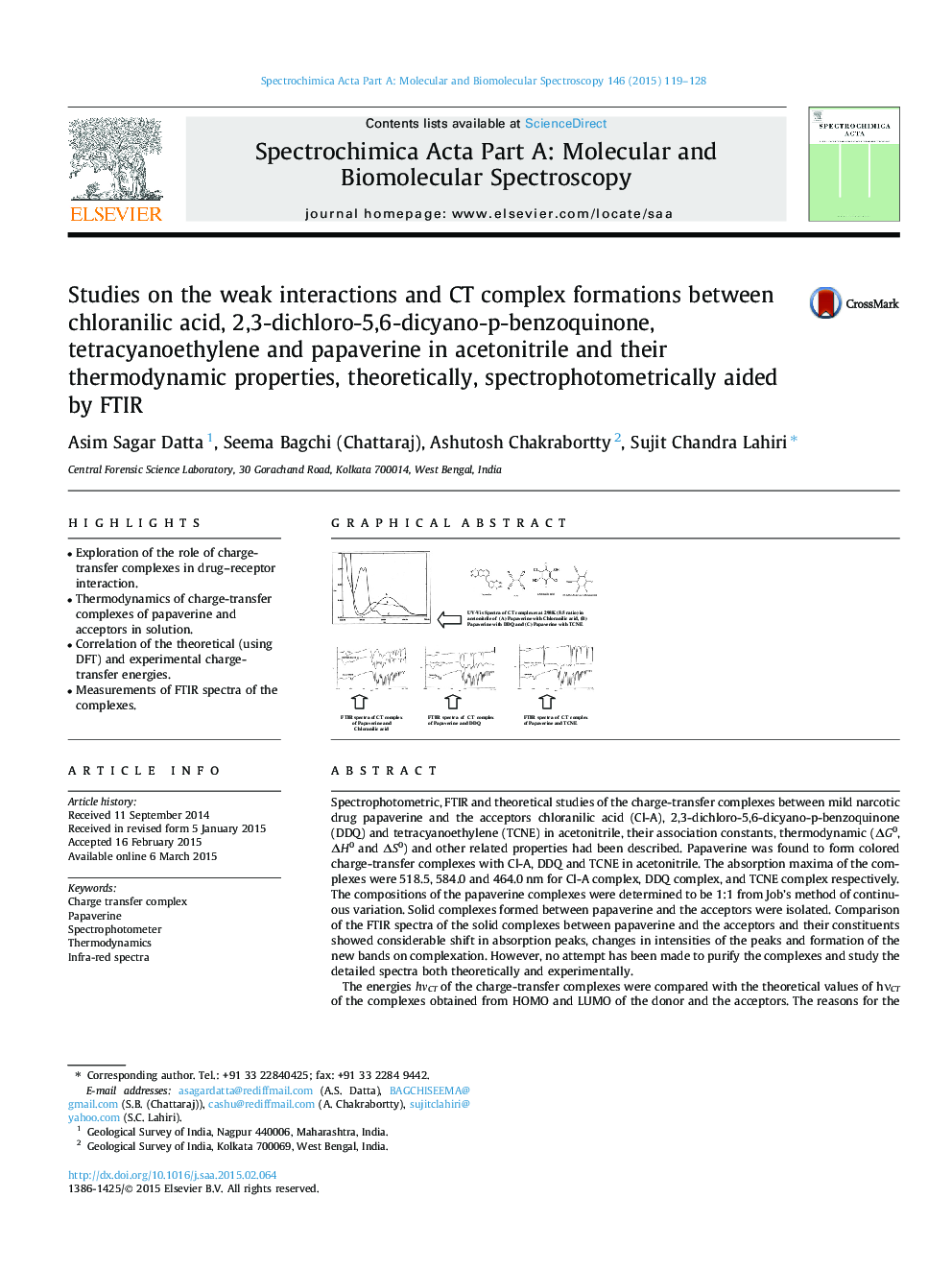| Article ID | Journal | Published Year | Pages | File Type |
|---|---|---|---|---|
| 1231908 | Spectrochimica Acta Part A: Molecular and Biomolecular Spectroscopy | 2015 | 10 Pages |
•Exploration of the role of charge-transfer complexes in drug–receptor interaction.•Thermodynamics of charge-transfer complexes of papaverine and acceptors in solution.•Correlation of the theoretical (using DFT) and experimental charge-transfer energies.•Measurements of FTIR spectra of the complexes.
Spectrophotometric, FTIR and theoretical studies of the charge-transfer complexes between mild narcotic drug papaverine and the acceptors chloranilic acid (Cl-A), 2,3-dichloro-5,6-dicyano-p-benzoquinone (DDQ) and tetracyanoethylene (TCNE) in acetonitrile, their association constants, thermodynamic (ΔG0, ΔH0 and ΔS0) and other related properties had been described. Papaverine was found to form colored charge-transfer complexes with Cl-A, DDQ and TCNE in acetonitrile. The absorption maxima of the complexes were 518.5, 584.0 and 464.0 nm for Cl-A complex, DDQ complex, and TCNE complex respectively. The compositions of the papaverine complexes were determined to be 1:1 from Job’s method of continuous variation. Solid complexes formed between papaverine and the acceptors were isolated. Comparison of the FTIR spectra of the solid complexes between papaverine and the acceptors and their constituents showed considerable shift in absorption peaks, changes in intensities of the peaks and formation of the new bands on complexation. However, no attempt has been made to purify the complexes and study the detailed spectra both theoretically and experimentally.The energies hνCT of the charge-transfer complexes were compared with the theoretical values of hνCT of the complexes obtained from HOMO and LUMO of the donor and the acceptors. The reasons for the differences in hνCT values were explained. Density function theory was used for calculation. hνCT (experimental) values of the transition energies of the complexes in acetonitrile differed from hνCT (theoretical) values. IDV value of papaverine was calculated.Charge-transfer complexes were assumed to be partial electrovalent compounds with organic dative ions D+ and A− (in the excited state) and attempts had been made to correlate the energy changes for the formation of the complexes with the energy changes for the formation of electrovalent compounds between M+ and X− ions.
Graphical abstractFigure optionsDownload full-size imageDownload as PowerPoint slide
